Volunteering at the Sea Center: How it Changed My Life
I was first introduced to the Sea Center when I moved to Santa Barbara in fifth grade. I had always loved the ocean, but the majority of my ocean education was visits to places like the Seattle Aquarium. The aquarium was always the highlight of my week, but the features on exotic life made the ocean seem distant and far away. I could do my own research on the ocean, but I didn’t understand what oceans truly looked like until I visited the Santa Barbara Museum of Natural History Sea Center. Ever since, I’ve been hooked not only by the Sea Center, but by everything ocean-related.
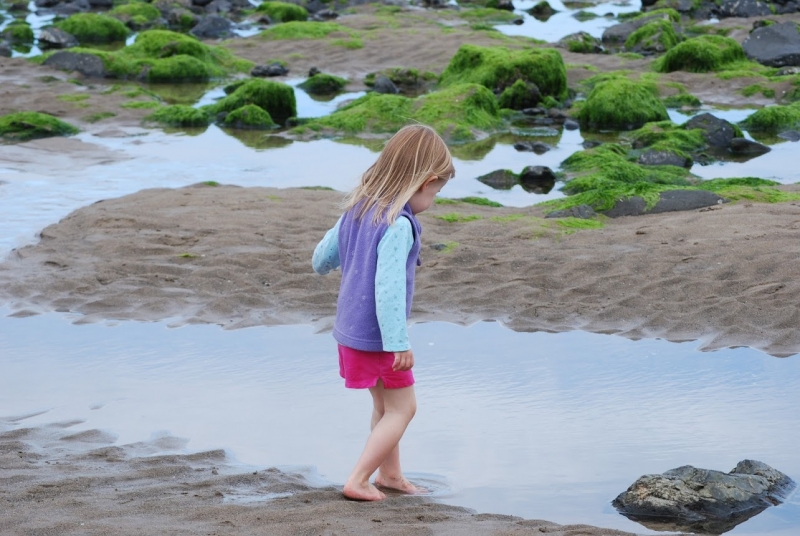
I have been interested in the ocean ever since I can remember. Here I’m tidepooling in Cannon Beach, OR, one of my favorite places when I was younger. You could almost always find Ochre Stars (Pisaster ochraceus) there.
I would beg my parents to take me to the Sea Center “just one more time.” While I was there, I eagerly lapped up any information I could get. I never would have imagined that anything as colorful as a Garibaldi (Hypsypops rubicundus) (California’s own state marine fish) would take up residence anywhere remotely close to me, never mind right below my feet! My favorite exhibit was the Wet Deck, where I first experienced the work of a marine scientist. The Wet Deck allows guests to conduct mock ocean research, including everything from microscopes to crab nets. The Sea Center showed me the complexity of local marine life for the first time. It was then that I decided that I was going to be a marine scientist.
I was introduced to volunteering at the Sea Center through a family friend. My parents would need to accompany me since I was too young to volunteer alone, but I was ecstatic anyway. When the day of the acceptance interview rolled around, I was so nervous I almost didn’t get out of the car. Luckily, I did get out of the car (after quite a few deep breaths) and I walked out of the Sea Center office as a Sea Crew volunteer (in training).
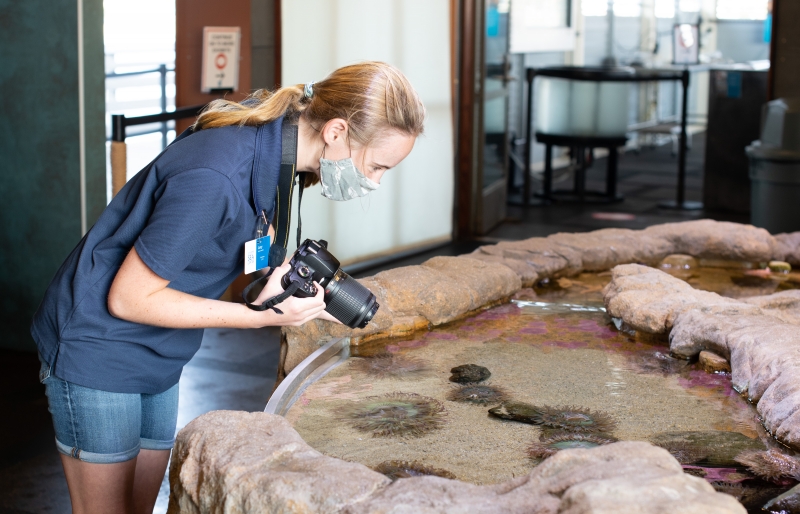
Here I am inspecting the anemones in Intertidal Wonders, one of the exhibits I enjoy interpreting for. My favorite part about this exhibit is sharing that anemones are trying to kill you when you touch them, but their stinging cells (called nematocysts) cannot pierce our thick skin. However, if you were a small fish, you could be stunned and digested by the anemone. That usually gets a reaction from guests!
It’s been around two years since that day, and I still love coming in to volunteer. Each time I enter the Sea Center I am immersed in the knowledge and passion of the volunteers and employees there. There’s always something new and exciting happening, from arrivals like the endangered juvenile Giant Sea Bass (Stereolepis gigas) to Orca (Orcinus orca) sightings in the channel. It is a privilege to be part of one of the only places in the world where “Did you know that the Southern Sea Otter (Enhydra lutris) has one million hairs on its body per square inch, compared to our 10,000 total?” is a common way to start a conversation.
Not only did the Sea Center inspire my interests, it also helped me share that interest with others. This turned out to be one of the greatest gifts that the Sea Center has given me. When I was younger I was extremely shy. When I first started volunteering I hardly talked, preferring to hold sharks and demonstrate the Ekman grab (a tool for collecting sediment samples). I slowly came out of my shell and found that I loved teaching and interacting with guests.
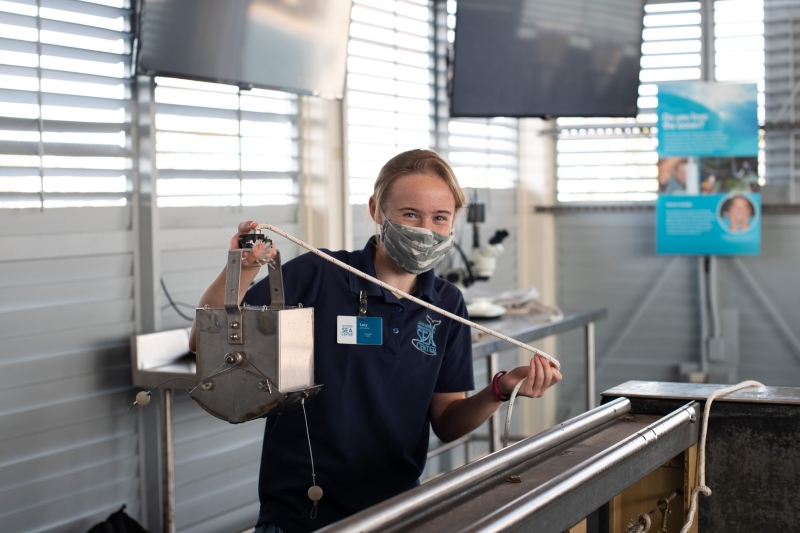
This is me demonstrating the Ekman grab, just after pulling it out of the water to collect samples.
After a shift one day, I was talking with Sam Macks Franz, M.M.A., then Sea Center volunteer and interpretation manager, and she introduced me to Teen Programs at the Santa Barbara Museum of Natural History. That was the first time I had considered getting involved at the Museum. After thinking it over, I applied for the VolunTEENS program at the Museum. This program allows teens to give themed Museum tours and volunteer at the Butterflies Alive! exhibit. That year, the tour theme was dinosaurs. Like a large majority of us, I went through a dinosaur phase around four years old, so I was excited to learn more about them. I was also looking forward to Butterflies Alive!, mostly because “butterfly” was the first long word I could spell correctly.
I was welcomed with open arms by all of the Museum staff, especially Teen Programs. I loved experiencing the Museum community. It was during this program that I was first introduced to the Quasars to Sea Stars program. Quasars is a three- to four-year program that allows teens to explore their passion for science and nature, get firsthand experience conducting scientific research, and broaden their horizons.
After weeks of fretting, deleting, and rewriting, I submitted my application for the Quasars to Sea Stars program. Then, something unexpected happened. One week before spring break, on Friday, March 13, schools in the Santa Barbara Unified School District shut down indefinitely, as a response to a worldwide pandemic. Our world was turned 180 degrees, with Zoom becoming a household name and face masks becoming necessary apparel. I completed my quasars interview with Teen Programs Manager Jenna Rolle, M.S., and Teen Programs Hearst Intern Charlie Thrift, over Zoom. Yet again, I spent the hour before my interview stressing and worrying. Once it began, I was surprised to find that as my interview progressed, I became more comfortable and soon forgot the “butterflies in your stomach” feeling of twenty minutes earlier. It could have been Jenna and Charlie’s welcoming attitude, or the fact that I knew the answers to the questions they were asking, but I began to gain confidence. Once my nerves cleared up, I knew that I had found the place where I wanted to be.
I was accepted into the program, and my first summer was even better than I had imagined. I spent my time volunteering at the COVID-safe version of Butterflies Alive! and working on my first-year quasar final project. Although the Museum was fortunate enough to stay open, the Sea Center did have to close for a time as a result of the pandemic. The Sea Center was able to reopen for a little while, but when Santa Barbara tipped back into the purple zone, they were forced to close once again. Volunteers eagerly awaited the time when the Sea Center could permanently open its doors and we could return to interpreting for guests. Now that the Sea Center has been allowed to open again, everyone is jumping back into teaching guests about the wonders of the ocean in true Sea Center style.
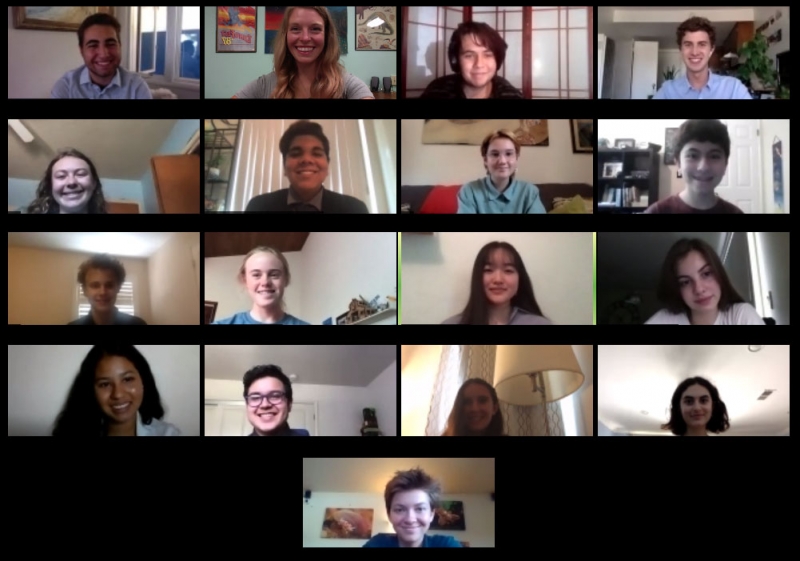
The Quasars final project presentation over Zoom. I am the second column from the left, three down from the top. We still had a blast, even though we couldn’t be together in person.
One of the Sea Center’s main educational messages is about the health of the ocean and our role in this problem. For centuries the human race has viewed the ocean as distant, mysterious, and endless. Many of us still view the ocean this way. Recently, through new technology, we have discovered that the ocean is not impervious to our mistreatment. Just about every environmental problem we have created has been thrown at the ocean, from overfishing to climate change, and we are starting to feel the consequences. Fish stocks are depleted, coral reefs are bleaching, and our oceans have become our trash can, along with countless other problems. The ocean we enjoy today is not the same ocean our parents saw, just like how our ocean will not be the same ocean our children see. Some of the damage we have inflicted on our marine world is irreversible. However, there is still a large part of our oceans that we can repair. The ocean is adaptable and can bounce back, if we give it a chance.
Many people know what overfishing, marine pollution, and climate change are, but don’t do anything about these problems. This is not entirely their fault. The world around us has been engineered for consumption, but we still have choices. This is where the Sea Center comes in. Through hands-on experience we are showing the public our oceans, our impacts, and our solutions. I cannot guarantee that the Sea Center has changed any life but my own, but I would bet that we have. The volunteers and employees at the Sea Center have passion, joy, and hope for the oceans and their future. The fact that there are people like us all around the globe provides hope in these dark times. We are showing that we have the power to destroy our oceans, but we also have the power to save them.
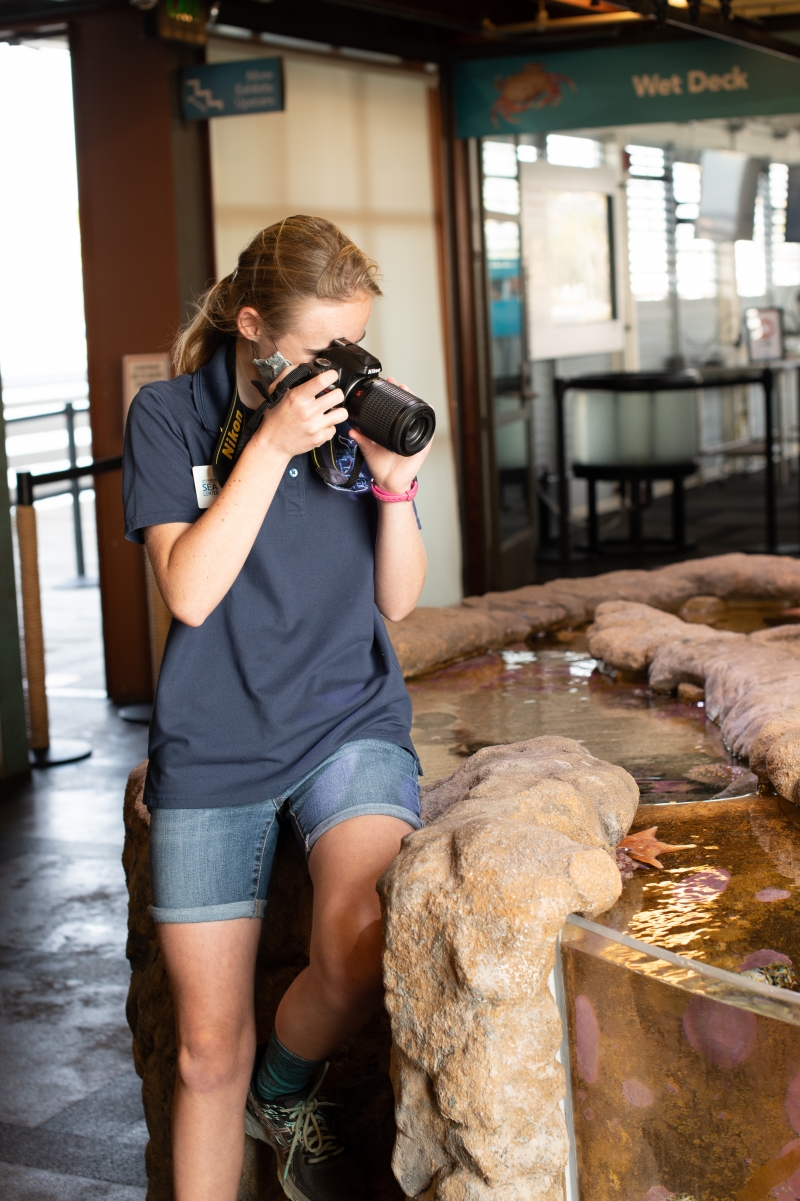
Here I am photographing invertebrates in Intertidal Wonders as a part of my Quasars work shift project, documenting the volunteers of the Sea Center.
Lucy is currently working on portraying the heart of the Sea Center by interviewing several volunteers. She will talk with shark fanatics, nudibranch lovers, and more. Lucy will tell their stories in a future series of short articles.

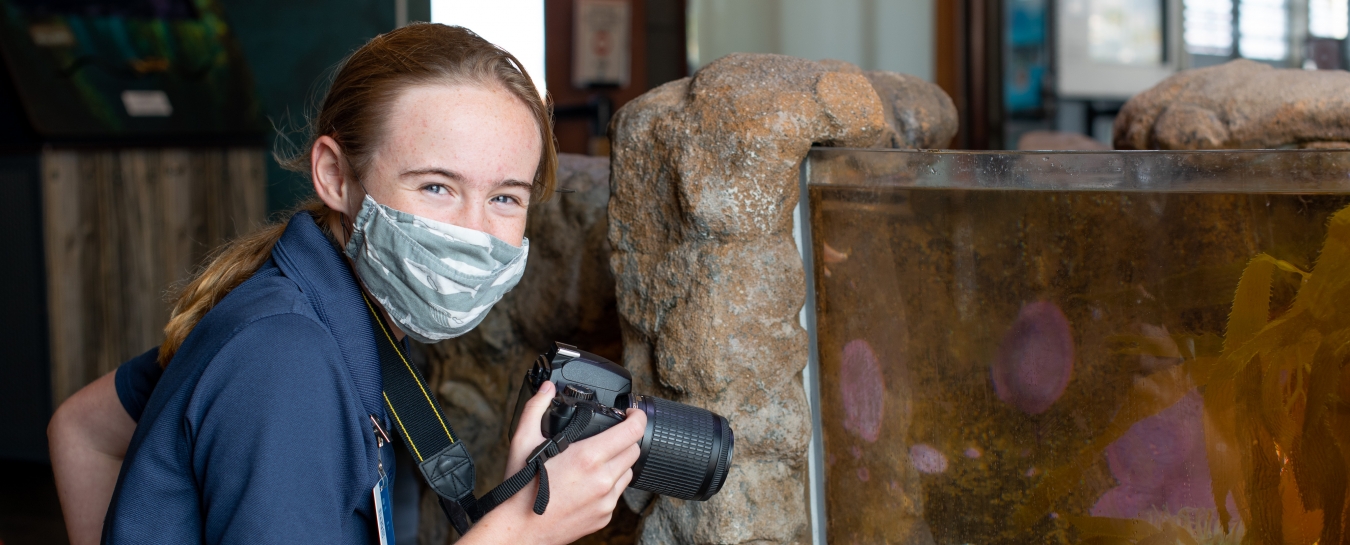
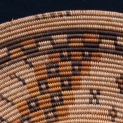
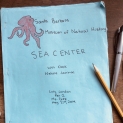
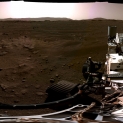


2 Comments
Post a CommentFabulous article Lucy! I, too, became interested in marine science at an early age. I'm so glad the Sea Center and Museum has helped guide you on your way to becoming a marine scientist. It was the perfect career choice for me.
Great article, very inspirational! Look forward to visiting the sea center soon